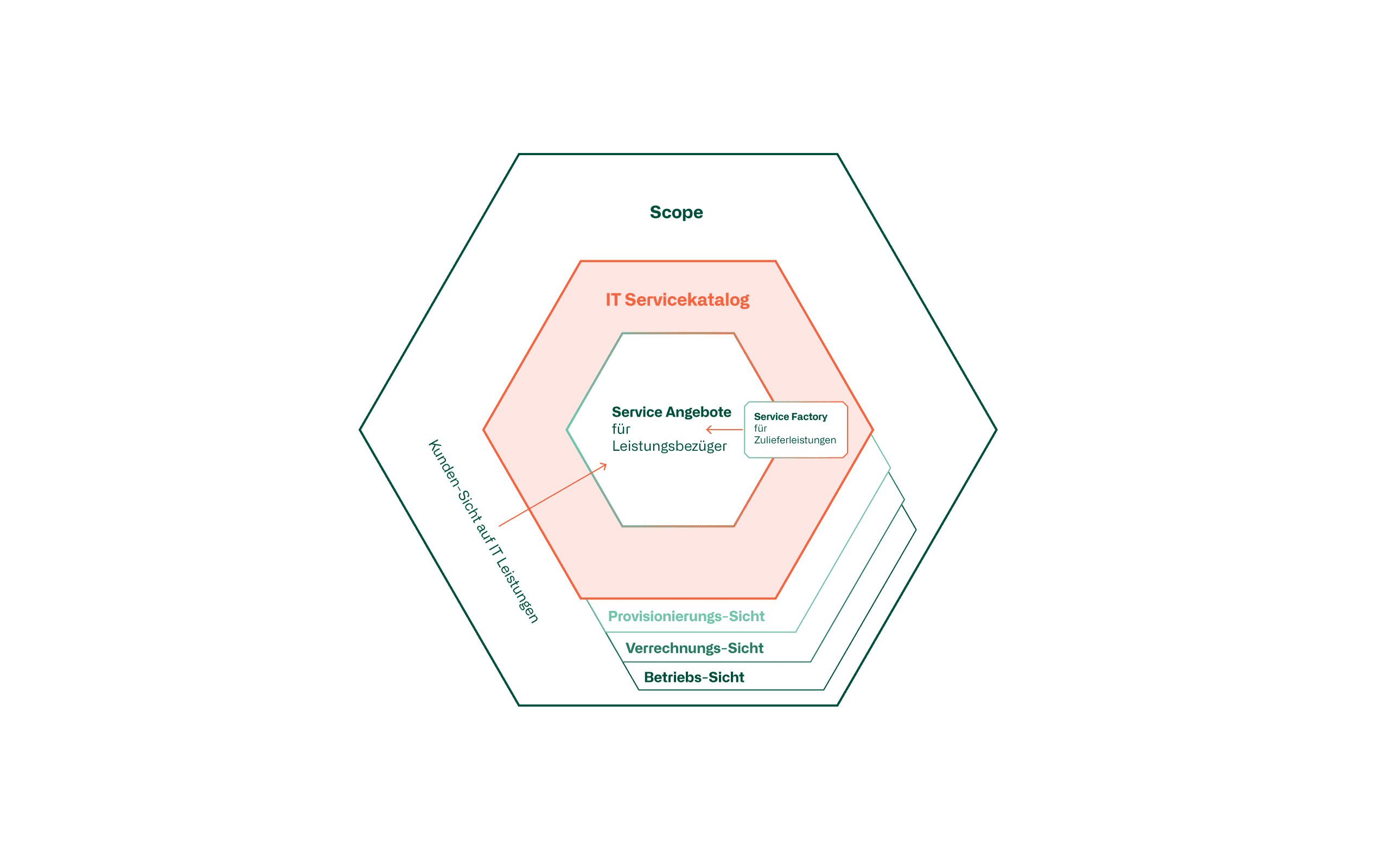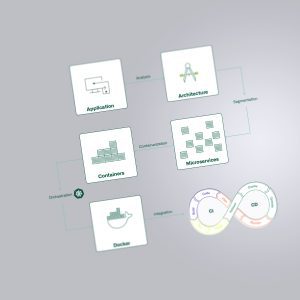Blog
IT service catalogue as a mirror of the IT organisation
A transparent and above all concise IT service catalogue says a lot about the IT organisation and its IT services.
The effect and benefit of a meaningful IT service catalogue is still underestimated today. There is no better control instrument than a coordinated IT service offer that covers the requirements and expectations of the customers and service recipients. The effect that a good IT service catalogue has on the customer is essential for successful and constructive cooperation.
An excellent example of the selection and consumption of services is gastronomy. After entering the restaurant, one is led to the table and shortly afterwards is handed a menu card. This contains an assorted selection of food and drink options. The entire offer is coordinated and covers the usual spectrum of customer needs. The deciding factor for a repeat visit or our recommendation is how comfortable we felt in the restaurant, how we were guided through the culinary evening and how delicious the food was.
Why does information technology often find it difficult to present its offer transparently, in the same way as gastronomy, and to design the relationship in a guided way? In short, to make IT a customer experience for the service user.
This is despite the fact that IT service management is well established in most companies, according to the statement. But reality shows something different. Often, the customer and service user has only rudimentary knowledge of what he receives for his money in terms of IT services. This works reasonably well as long as enough budget is allocated. If this changes, it becomes difficult for both parties. The client and service user usually does not have the freedom to choose who they want to get their IT services from, otherwise things would probably be different.
The service users have a need for transparency and comprehensibility about the IT services they receive. This is because only what is known can be controlled. Classic means of control are the purchase quantity, options, variants of availability or quality of the IT services. All of this must be done under the aspect that the IT services fit the business requirements and goals.
The service providers on the other hand, must strive to deliver exactly the IT services that are needed and for which appropriate compensation is also defined.
An adequate IT service catalogue provides a common basis for constructive cooperation between all parties and helps significantly in managing common expectations. This promotes efficiency in availability and communication in operations.
What makes a good IT service catalogue?
An IT service catalogue forms the common basis for the management of IT services by IT, based on the requirements and expectations of the customer and service user. In concrete terms, this means what IT service content is required for each IT service, in what quality and grade. The change in performance has a direct impact on costs. For example, the higher the quality and availability, the higher the costs.
A good IT service catalogue combines the customer's view and current requirements with the IT services and their capabilities. The service catalogue therefore consists of two sections to separate and simplify the mapping of different needs:
- The service offer, which is addressed to the service recipients and comprises a selection of comprehensible IT services for them. To ensure that this is guaranteed at all times, the scope and exact content of the IT services should be worked out with all service recipients and kept up to date. This ensures the transparency and controllability of the IT service offerings. To ensure consistent service quality and excellence, meaningful and measurable criteria (KPI) are defined for each IT service and regularly reported for review. In this way, it is possible to react quickly to deviations or changed requirements.
- The Service Factory contains all the necessary IT supply services for the IT services offered. These are often also referred to as supporting services. The individual service modules in the factory describe the delivery content to be provided by the responsible team. The key success lies in dimensioning and modelling these services in such a way that no over- or undercapacities arise.

It should be taken into account that service delivery in the service-oriented environment has several dimensions, such as:
- Provisioning - An order triggers provisioning activities at one or more IT organisational units (responsibilities; who, what, when).
- Allocation of services - Every IT service generates costs for system use and services. Appropriate structures and procedures are needed to cover them through service charging.
- Operation/support - Every IT service requires corresponding operational activities; there are requirements for the service structure to ensure continuity or support in the event of faults.
Service organisation
With the introduction of a structured service catalogue, it is often necessary to adapt the organisation. The service moves to the centre and requires focused support and control. ITSM refers to this role as "service owner". By introducing such a role, the IT service is placed at the centre with an end-to-end view of service provision and operated accordingly. The technical "function and feature" consideration and decision thus loses importance.
What is a proven approach?
atrete understands the IT service catalogue as an essential basis for the service definitions in the IT organisation. A coordinated service offer supports constructive and successful cooperation with the service recipients. The service modules of the Service Factory determine the work assignments for the responsible IT teams and support efficient control of service provision. The cooperation and interactions between the IT teams are determined by the IT service structure.
The IT services in the service catalogue are each represented as a service MAP (tree structure). Each module is provided with additional information such as service description, responsible roles, valid OLA/UC, variants & options, costs, etc.. This promotes support and change efficiency, as all information on the service object can also be found with it.
We recommend starting with a pilot. In this pilot, 2-3 suitable IT services are to be selected from the company's portfolio, which are technically and operationally well documented. These IT services are to be modelled according to the requirements (decomposition). A suitable ITSM tool with catalogue mapping functions should be available for the subsequent mapping and documentation.
Successful introduction
The successful definition and introduction of IT service management in corporate IT is a matter for the boss and, from experience, usually also an organisational project. The introduction of a service end-2-end responsibility for IT services has an impact on the IT delivery organisation.
If a service catalogue is to be defined and built up in this way, it requires adequate ITSM tool support. Only through tool-supported use will the service catalogue bring its full benefits. Classical service desk tools usually understand a service catalogue as a keyword list without further object functionalities.
Conclusion
Creating a good IT service catalogue and keeping it up to date is certainly associated with effort. The added value for the entire company from the point of view of the purchaser and the service provider is immense. Just think of the ongoing discussions and dissatisfaction on both sides and the time spent on this. The most important argument is that the IT service becomes transparent, measurable and thus controllable on the basis of the service catalogue.
The satisfaction for the users and the IT team promotes motivation and creativity.
Today, IT is an important part of all business activities and the requirements and heterogeneity of the IT landscape are increasing. Active IT service management is an important basis for success with IT. Just like technology, this framework has to evolve continuously.
True to the principles: THINK BIG - act small




